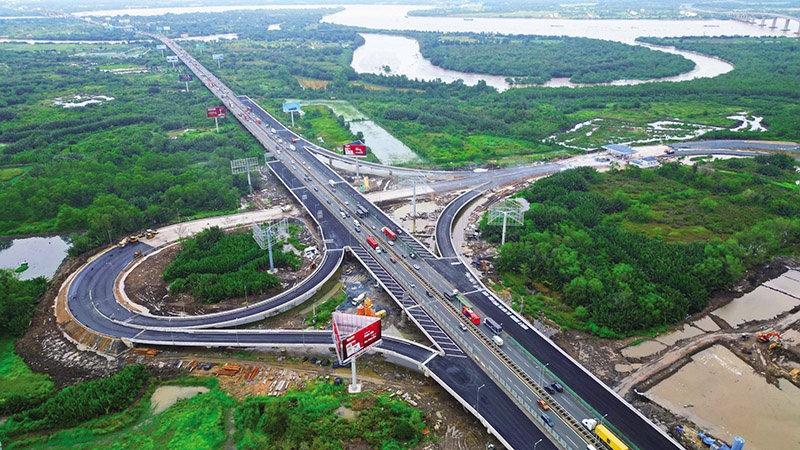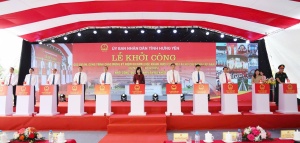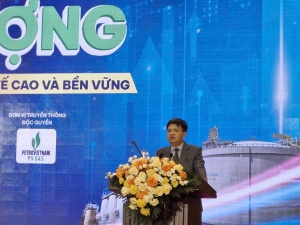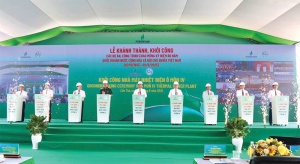In a recent report submitted to the government, the Ministry of Finance (MoF) noted that the national economic landscape – viewed both from a macro and local perspective – showed encouraging signs.
“All major economic centres reported inspiring results in the first eight months of 2025,” the report emphasised.
Specifically, all 34 localities across the country recorded on-year increases in their Index of Industrial Production (IIP).
 |
| Ho Chi Minh City places focus on accelerating public investment to promote growth |
Accordingly, Phu Tho led with a remarkable surge of 26.2 per cent, followed by Ninh Binh at 22.8 per cent, Hue at 18.7 per cent, Nghe An at 16.4 per cent, and Quang Ninh at 15.6 per cent, to name but a few.
Beyond industrial production, each locality made its own mark on socioeconomic development during August and over the eight-month period.
For instance, Hanoi’s tourism sector staged a strong recovery, with 3.18 million visitors in August alone — up 27.5 per cent year-on-year.
Haiphong stood out with a state budget revenue approximating $5.27 billion, showing nearly 30 per cent jump on-year. Meanwhile, its IIP rose by 14.5 per cent, reaffirming its role as a key growth driver in the Red River delta.
Bac Ninh overtook Ho Chi Minh City to become the country’s top exporter in August, with export value reaching nearly $8.7 billion, up 33 per cent on-year.
Other localities also saw solid performance. Dong Nai attracted over $2 billion in foreign direct investment (FDI) and saw the establishment of 4,971 new businesses.
Phu Tho, in addition to leading in IIP growth, also recorded strong FDI inflows with 39 new projects.
Meanwhile, Da Nang remained a major tourism magnet with 12.8 million tourist arrivals over eight months.
An Giang’s industrial production value rose 13.9 per cent, while its tourism sector skyrocketed by 76 per cent; or Lam Dong in the Central Highlands region sustained stable growth, with exports up 64.7 per cent on-year.
The country’s economic locomotive — Ho Chi Minh City — also saw strong momentum.
At a meeting held on September 9 to review the economic and social performance of August and the first eight months, Ho Chi Minh City People’s Committee Chairman Nguyen Van Duoc noted, “The city has effectively executed its dual mandate – ensuring smooth operations under the new two-tier local government model, while simultaneously focusing on economic and social recovery – continuing to play the role as a national growth driver.”
During the eight-month period, Ho Chi Minh City’s IIP rose by nearly 6 per cent on-year. Total retail sales of goods and consumer service revenue grew by 15.6 per cent. The city’s export value touched $61.2 billion, maintaining its top position nationwide and marking a 6.35 per cent increase on-year.
Notably, the MoF highlighted that diverse localities have proactively adjusted their growth scenarios in accordance with Resolution 226/NQ-CP, issued on August 5 by the government.
Many even set targets surpassing those assigned by the central government. For example: Quang Ninh aims for 14 per cent GRDP growth, compared to the assigned 12.5 per cent; Haiphong targets 12.35 per cent growth, higher than the allocated 12.2 per cent; Phu Tho striving for 10.3 per cent growth compared to a 10 per cent government target); or Dong Nai and Danang both aiming for 10 per cent growth, exceeding their respective targets of 8.7 per cent and 9 per cent.
“This demonstrates the strong determination and development potential of localities in contributing to the nation’s overall growth goals,” the MoF Ministry stated in the report.
While the socioeconomic situation remains optimistic, Minister of Finance Nguyen Van Thang offered a candid assessment in the report to the government, “The growth task for 2025 still faces many challenges. Although forecasts suggest Vietnam’s GDP growth could reach a minimum of 8 per cent this year, reaching the 8.3–8.5 per cent target will require significant effort.”
Many growth-promoting measures are being vigorously implemented – with local-level commitment playing a crucial role, particularly from key economic engines and strategic localities.
To achieve its assigned target of 8.5 per cent regional GDP growth in 2025, Ho Chi Minh City has mapped out a scenario projecting 10.22–10.38 per cent growth in Q3, and 10.4 per cent in Q4. The city is also prioritising the acceleration of public investment disbursement, as Chairman Nguyen Van Duoc noted that public investment disbursement in Ho Chi Minh City is still unstable, which could negatively impact the city’s growth rate.
Alongside Ho Chi Minh City, growth momentum is also expected from other dynamic provinces such as Phu Tho, Bac Ninh, and Quang Ninh.
“Phu Tho’s growth target for this year is 10.3 per cent, and the province aims for an average annual growth rate of 11–12 per cent in the 2026–2030 period,” said Tran Duy Dong, Chairman of Phu Tho People’s Committee in a recent talk with VIR.
He added that Phu Tho will focus on key pillars such as attracting investment in high-tech, processing, and manufacturing sectors; accelerating strategic infrastructure projects; developing green and sustainable agriculture; and applying advanced technologies to enhance GRDP growth — thereby contributing to national economic expansion.
“Numerous measures to boost growth are being actively and firmly implemented, with the relentless efforts of localities being a pivotal factor, especially among the country’s economic leaders and high-potential localities,” he noted.
 |
Hung Yen breaks ground on three major projects worth over $720 million
In celebration of the 80th anniversary of the August Revolution and National Day, Hung Yen province launched three major development projects on August 19 with a combined investment of approximately $720 million. |
 |
Investment in energy – foundation for high and sustainable economic growth
The Vietnam Institute of Economics and World held a forum to discuss energy development and economic growth in Hanoi on August 21. |
 |
Vietnam marks date with project bonanza
Construction of hundreds of projects, both state and privately funded, is hoped to be a major propellant for national economic growth this year. |




